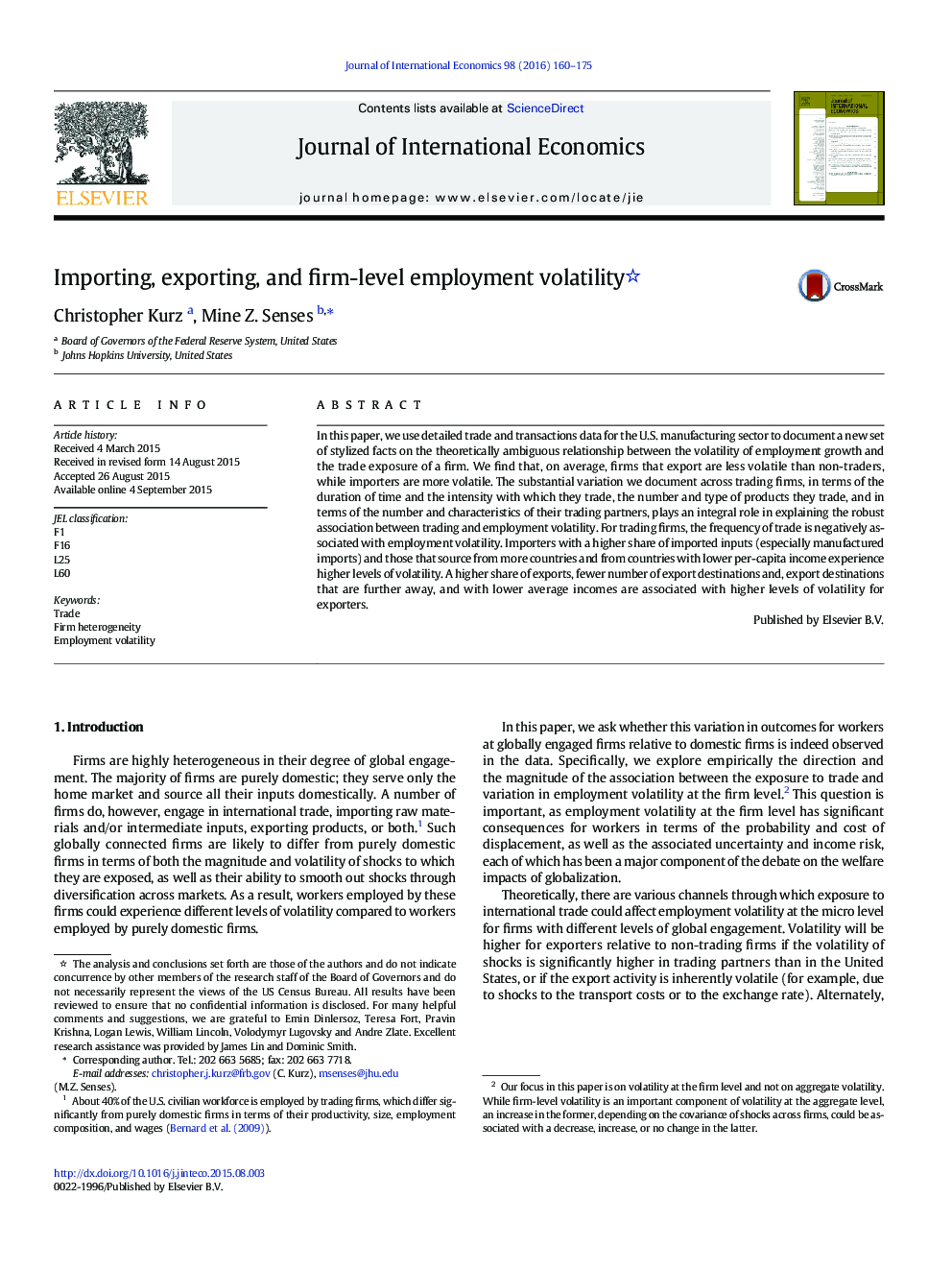| Article ID | Journal | Published Year | Pages | File Type |
|---|---|---|---|---|
| 7364167 | Journal of International Economics | 2016 | 16 Pages |
Abstract
In this paper, we use detailed trade and transactions data for the U.S. manufacturing sector to document a new set of stylized facts on the theoretically ambiguous relationship between the volatility of employment growth and the trade exposure of a firm. We find that, on average, firms that export are less volatile than non-traders, while importers are more volatile. The substantial variation we document across trading firms, in terms of the duration of time and the intensity with which they trade, the number and type of products they trade, and in terms of the number and characteristics of their trading partners, plays an integral role in explaining the robust association between trading and employment volatility. For trading firms, the frequency of trade is negatively associated with employment volatility. Importers with a higher share of imported inputs (especially manufactured imports) and those that source from more countries and from countries with lower per-capita income experience higher levels of volatility. A higher share of exports, fewer number of export destinations and, export destinations that are further away, and with lower average incomes are associated with higher levels of volatility for exporters.
Related Topics
Social Sciences and Humanities
Economics, Econometrics and Finance
Economics and Econometrics
Authors
Christopher Kurz, Mine Z. Senses,
